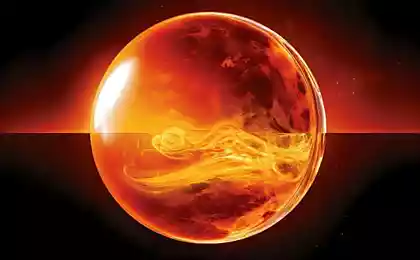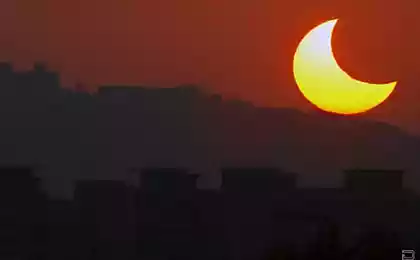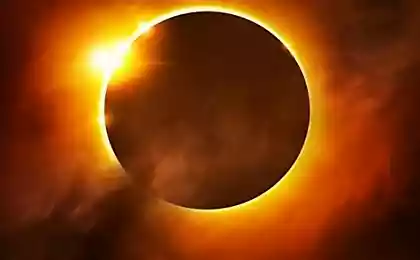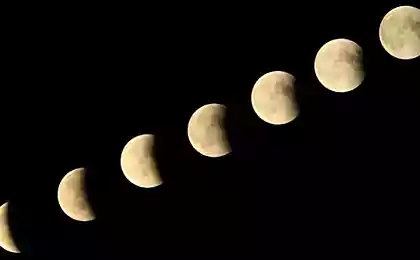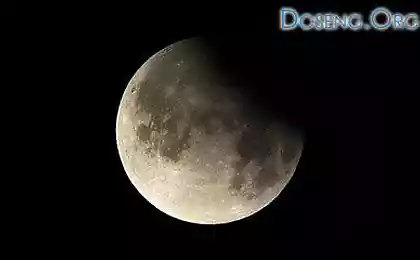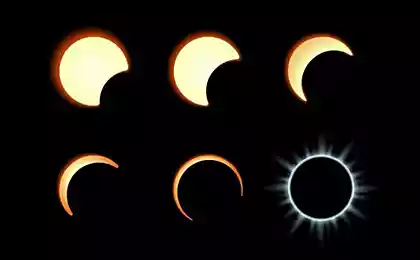1386
The last lunar eclipse in 2011
December 10 Earth passed between the moon and the sun, please us the blood-red moon. If you missed the chance to see the last lunar eclipse of 2011, we offer to admire them in photographs.
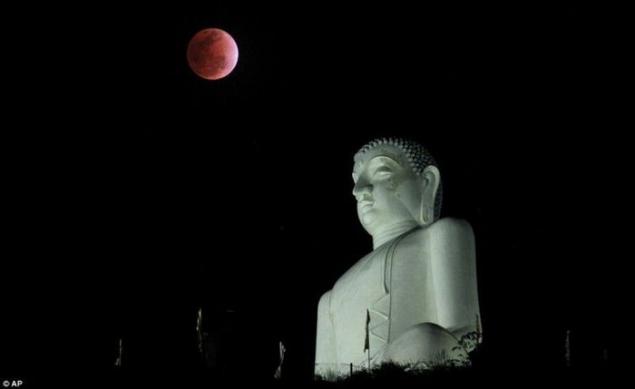
Color Moon speaks about the health of the atmosphere of this planet. Copper-red color indicates that everything is normal. (AP)
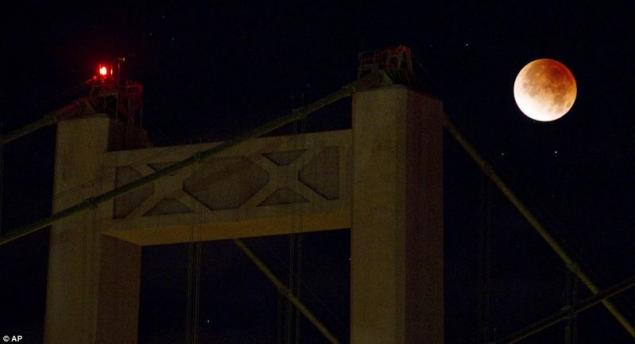
The moon over a statue of Buddha in Kurunegala, Sri Lanka. (AP)
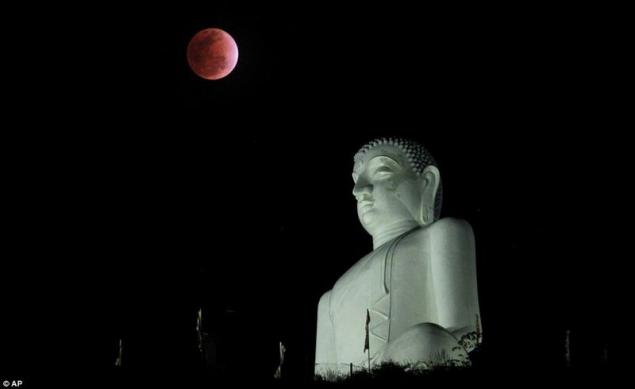
People take pictures of the moon during an eclipse of the north tower of the Golden Gate Bridge in San Francisco. (AP)

Besides, it was the last chance to see the "incredible" red lunar eclipse with the moon and the rising sun in the sky at the same time. Unlike solar, lunar eclipse - a fairly common phenomenon, occurring on average every two years. And all because the moon is one-third smaller than Earth, so it fits easily in the shadow of our planet. In the photo: The moon over the Golden Gate Bridge. (AP)

The best places for viewing the lunar eclipse were the residents of the western part of America, Hawaii, northwestern Canada, Australia, New Zealand and Central and East Asia. In the photo: the sunlight still passes through the earth's atmosphere, and casts a shadow on the moon. (AP)
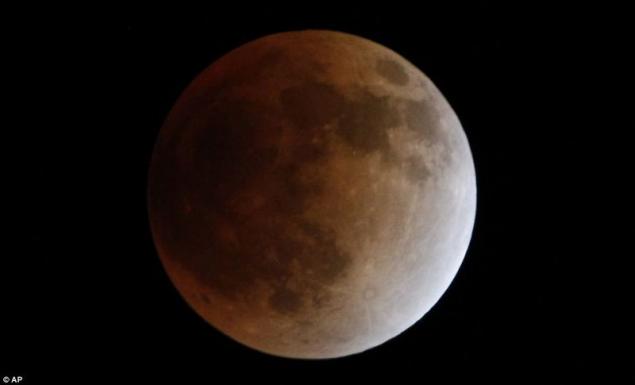
Eclipse in the natural arch in Arches National Park near Moab Utah. (AP)
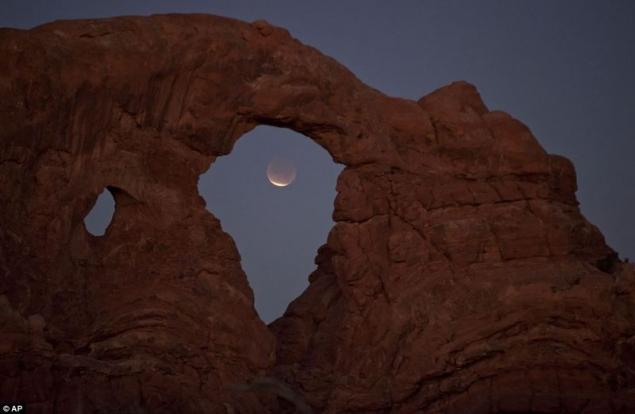
Lunar eclipse in the sky over the famous Sufi temple date Darbar in Lahore, Pakistan. (AP)
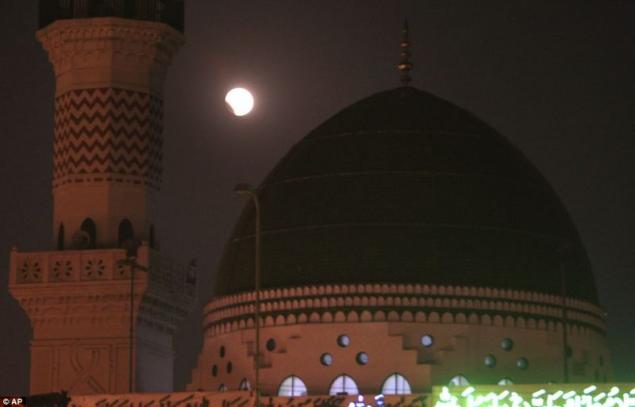
Health Earth's atmosphere can affect the color of the moon. (AFP / Getty Images)
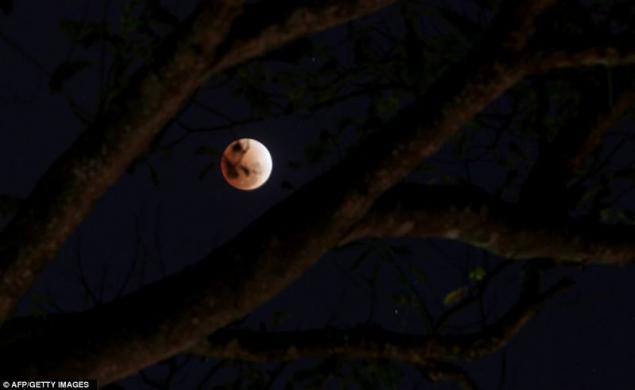
The unusual phenomenon can be observed in the western US and Canada. (EPA)
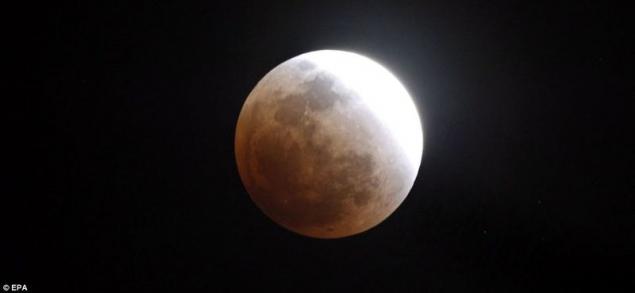
It was the second total lunar eclipse this year, the first was in June.
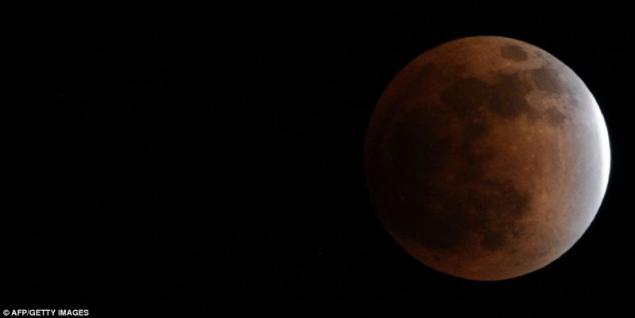
The atmosphere filters out blue light, leaving the red and orange hues that we see. Color lunar eclipse says about the health of the Earth's atmosphere. When he coppery red, then everything is fine. Black says that under a lot of volcanic dust. (AP)
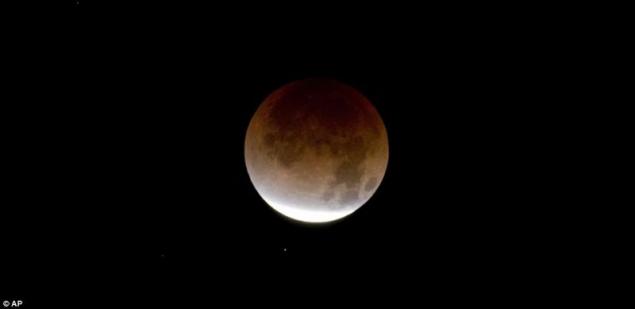
Due date - next week is the winter solstice - the moon was unusually high in the sky. The next total lunar eclipse will be only in 2014. (EPA)
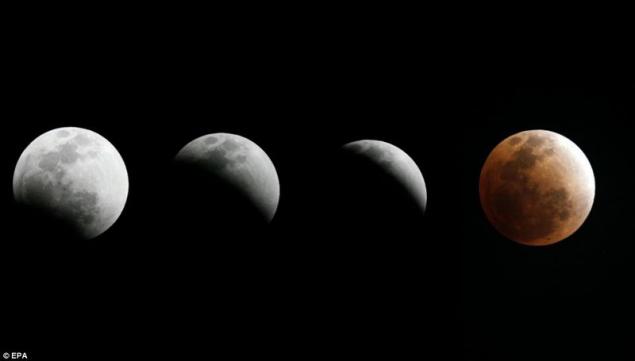
Moon passes through the shadow cast by the Earth, because of which the color varies for some time. (NASA)
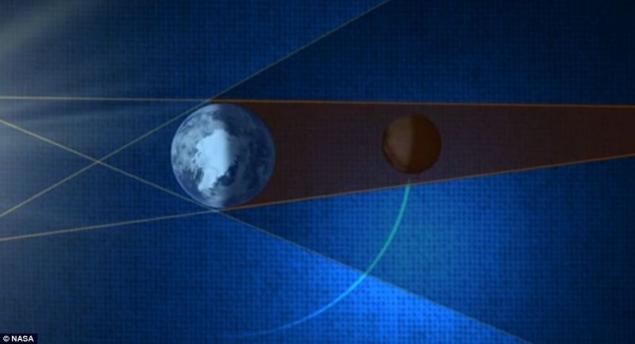
Sunlight could still pass through the Earth's atmosphere and cast a glimmer of the moon. The atmosphere filters out most of the blue light, leaving a bright red and orange. (NASA)
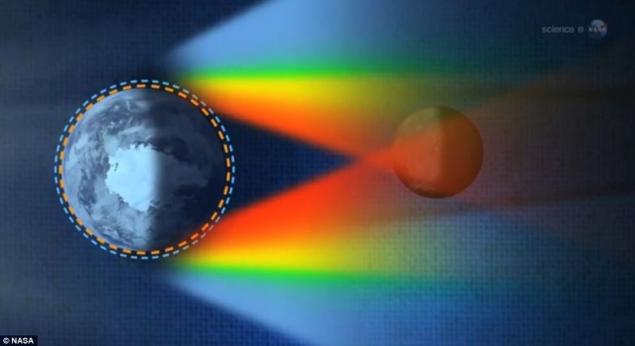

Color Moon speaks about the health of the atmosphere of this planet. Copper-red color indicates that everything is normal. (AP)

The moon over a statue of Buddha in Kurunegala, Sri Lanka. (AP)

People take pictures of the moon during an eclipse of the north tower of the Golden Gate Bridge in San Francisco. (AP)

Besides, it was the last chance to see the "incredible" red lunar eclipse with the moon and the rising sun in the sky at the same time. Unlike solar, lunar eclipse - a fairly common phenomenon, occurring on average every two years. And all because the moon is one-third smaller than Earth, so it fits easily in the shadow of our planet. In the photo: The moon over the Golden Gate Bridge. (AP)

The best places for viewing the lunar eclipse were the residents of the western part of America, Hawaii, northwestern Canada, Australia, New Zealand and Central and East Asia. In the photo: the sunlight still passes through the earth's atmosphere, and casts a shadow on the moon. (AP)

Eclipse in the natural arch in Arches National Park near Moab Utah. (AP)

Lunar eclipse in the sky over the famous Sufi temple date Darbar in Lahore, Pakistan. (AP)

Health Earth's atmosphere can affect the color of the moon. (AFP / Getty Images)

The unusual phenomenon can be observed in the western US and Canada. (EPA)

It was the second total lunar eclipse this year, the first was in June.

The atmosphere filters out blue light, leaving the red and orange hues that we see. Color lunar eclipse says about the health of the Earth's atmosphere. When he coppery red, then everything is fine. Black says that under a lot of volcanic dust. (AP)

Due date - next week is the winter solstice - the moon was unusually high in the sky. The next total lunar eclipse will be only in 2014. (EPA)

Moon passes through the shadow cast by the Earth, because of which the color varies for some time. (NASA)

Sunlight could still pass through the Earth's atmosphere and cast a glimmer of the moon. The atmosphere filters out most of the blue light, leaving a bright red and orange. (NASA)



